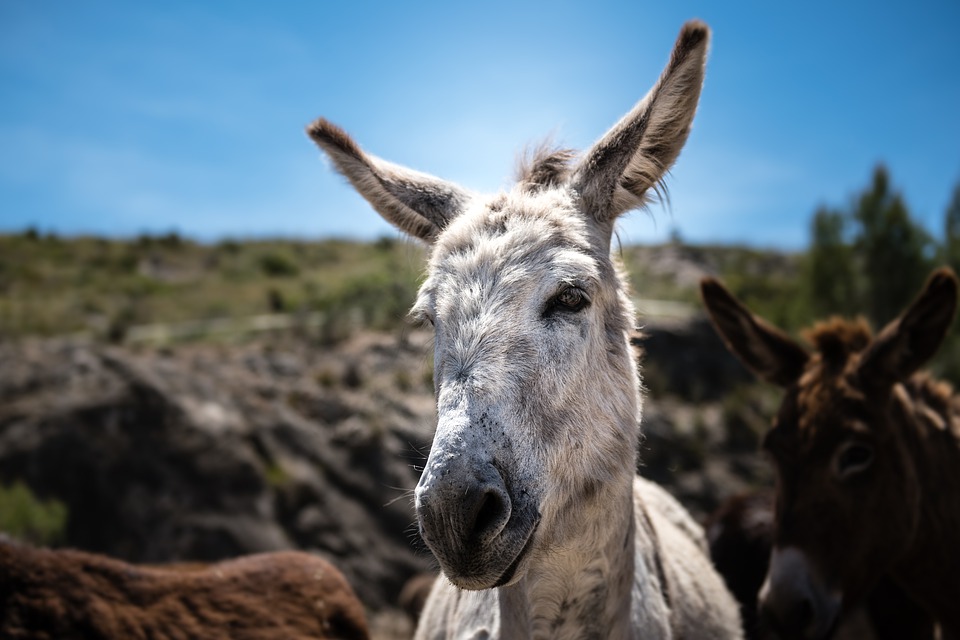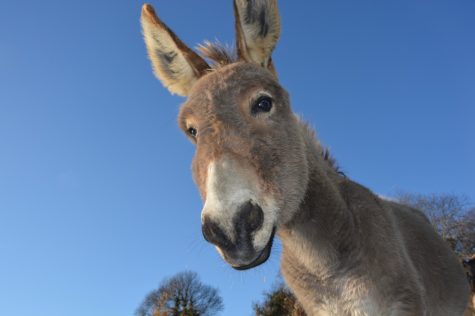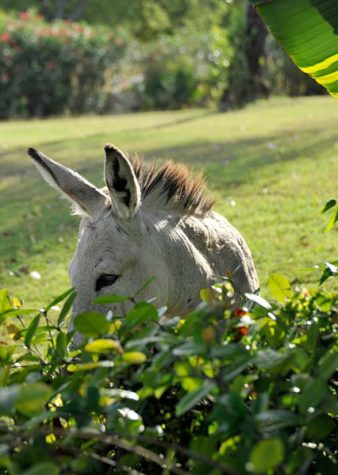 Non-native species get a lousy rap. Now don’t get me wrong, often they deserve it. Between the nutrias, peacock bass, eucalyptus trees, and lionfish of the world, environmentalists have a right to be a little xenophobic sometimes. But there are a few exceptions. Honeybees, for instance, are quite handy. Plus Emma’s wattle-necked softshell turtles, if for no other reason than their amazing name.
Non-native species get a lousy rap. Now don’t get me wrong, often they deserve it. Between the nutrias, peacock bass, eucalyptus trees, and lionfish of the world, environmentalists have a right to be a little xenophobic sometimes. But there are a few exceptions. Honeybees, for instance, are quite handy. Plus Emma’s wattle-necked softshell turtles, if for no other reason than their amazing name.
And then there are the ass holes of the Sonoran desert.
The border between the United States and Mexico has countless ass holes these days – far more than we had 50 or even 20 years ago. In fact, you could say that ass holes are on the rise. And while some people may be concerned by the number of ass holes along the border, I have begun to see it as a new reality. It’s something that we simply have to get used to.
 Now, I assume that most readers already know what an ass hole is. I mean, it’s a little patronizing to define it but perhaps I should quickly. Assholes, of course, are holes dug in the sand by wild asses. More commonly called donkey wells (and less commonly burro burrows), these features have become a common sight all across the Sonoran Desert.
Now, I assume that most readers already know what an ass hole is. I mean, it’s a little patronizing to define it but perhaps I should quickly. Assholes, of course, are holes dug in the sand by wild asses. More commonly called donkey wells (and less commonly burro burrows), these features have become a common sight all across the Sonoran Desert.
It seems that the wild ass, with its heavy bulk and sharp hooves, is especially adept at quickly digging down to the water table during the dry season and accessing moisture that other animals cannot. So, if you look carefully enough wandering from one established watering hole to another, you can see a string of shallow wells connecting them.
The thing about ass holes, beyond how common they seem to be, is how easy they are to take advantage of. This is likely true of all ass holes, but it’s especially true of those found along the border with Mexico.
All kinds of animals, from rodents to migrating birds to foxes dip into burro burrows to get water. And what’s more the water is better than they are likely to find at larger watering holes.
The research into these fascinating features is being done by Arizona State University PhD student Erick Lundgren (who patently prefers the term “donkey well” or really anything other than the term I have selected). For the last few years he has crisscrossed the desert documenting the beneficial behaviors of nonnative wild asses.
Lundgren points out that many of the area’s natural springs today are dominated by cattle, who have no problem dominating the water and crapping where they drink. Water that is often pretty foul. But ass holes, on the other hand, are generally surprisingly clean. It reminds me of the old saying: Opinions are like ass holes, they’re best when not shared too widely.

What’s most interesting about ass holes along the border is that no one seems to have noticed them until now (surprising because they are not at all subtle). Lundgren has combed the literature but the only reference he can find is a note from 1958 by a California geographer named Tom McKnight. Which, considering the substantial services that ass holes provide, seems a little unfair.
“No has ever thought it was interesting to know about. We would call it a keystone behavior anywhere that a native species does it,” Lundgren says, referring to behaviors that sustain particular ecosystems. “[But when a burro does it,] it doesn’t count.”
This is not to say that wild asses are totally free from judgement. They may compete with native mountain sheep for resources and they are incredibly noisy when you want to sit and enjoy the solitude of the desert. But at the end of the day, it may be time to reevaluate their presence in our supposedly pristine ecosystems.
The border between the US and Mexico has a lot of problems, especially today. But the presence of thousands of ass holes may not be one of them.
Photo Credit: Jo Wiggijo, Fred Hsu
Curious what these actually look like. I am, understandably, having difficulties finding an *ahem* appropriate picture.
Ha! I wish we had emoji like in a slack chat.
So interesting. I have always considered burros to be a native animal that returned home after a brief absence.
Now if we can only figure out what the problem with the bighorn sheep is.
A native camelid or two and also a giant ground sloth would also be very welcome!
It would have been nice if you had called these drinking wells something other than your click-bait headline. The government will soon round them all up so cattle ranchers can graze their cattle for pennies a day.
wouldn’t it be great to have the cattle actually managed responsibly?
and maybe recognize that there are some places they dont belong?
and maybe ask the ranchers, again, to respect all people who live here and our country and abundance.